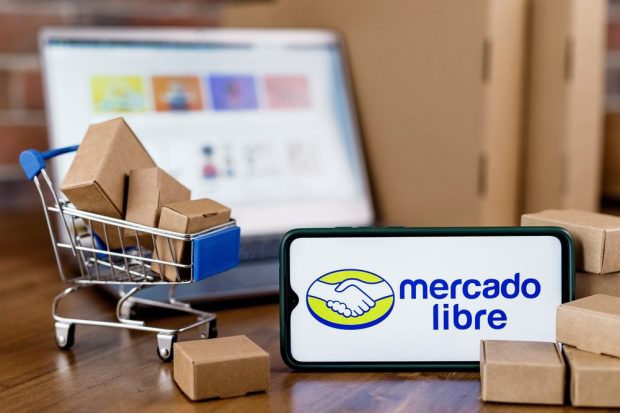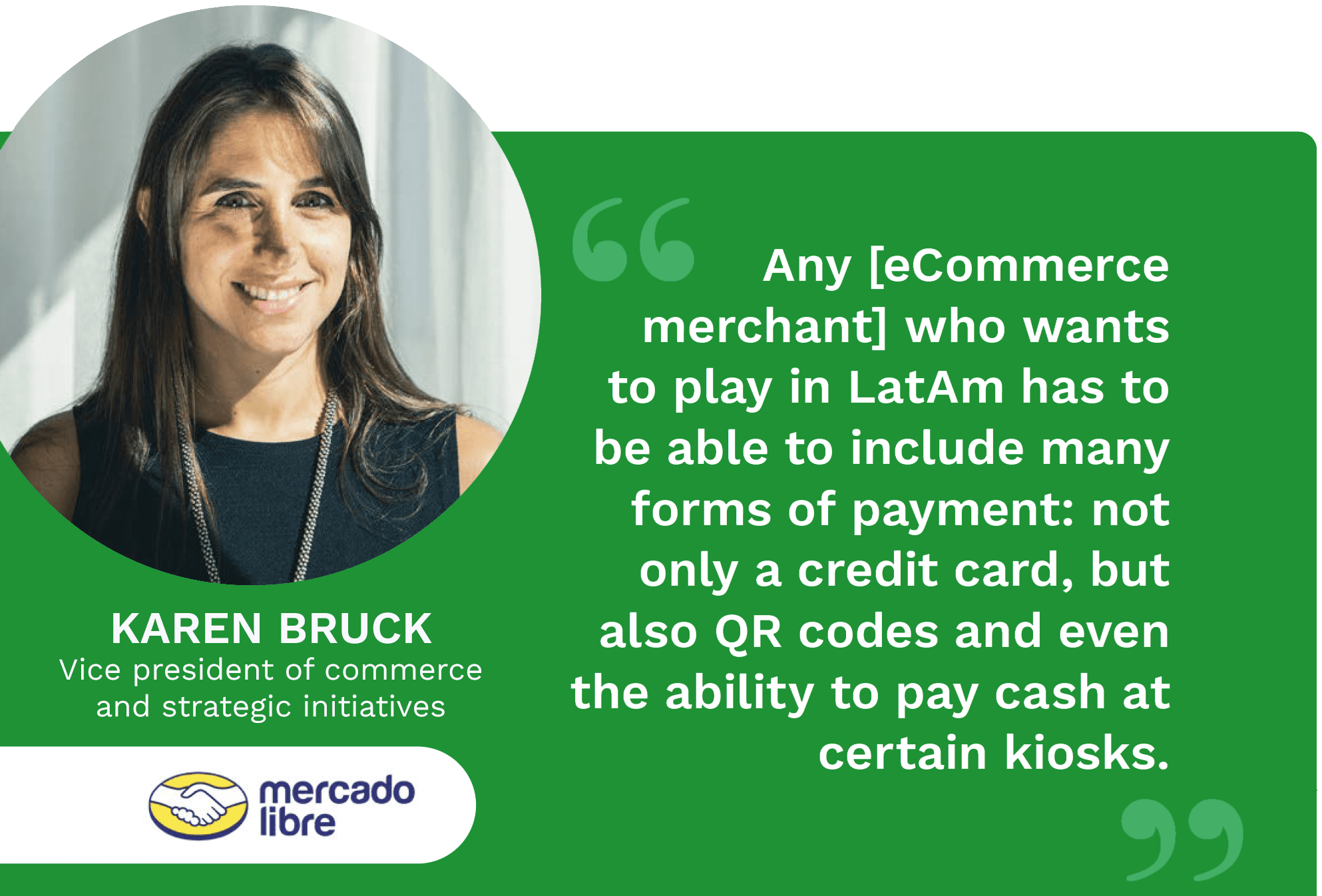How eCommerce Can Unlock the Latin American Retail Scene

PYMNTS talks with Karen Bruck, vice president of commerce and strategic initiatives at Mercado Libre, about the unique opportunities and challenges in Latin American eCommerce.
—
 Latin America’s eCommerce market is expanding rapidly, especially as the pandemic has radically altered consumers’ shopping habits. Brick-and-mortar shopping was previously the name of the game, but eCommerce shopping skyrocketed when social distancing became the norm.
Latin America’s eCommerce market is expanding rapidly, especially as the pandemic has radically altered consumers’ shopping habits. Brick-and-mortar shopping was previously the name of the game, but eCommerce shopping skyrocketed when social distancing became the norm.
“eCommerce penetration [before the pandemic] was way lower [in Latin America] than in the U.S. or other regions, such as Asia or China, in particular. eCommerce penetration more than doubled in Latin America during the pandemic, but the biggest difference from other regions is that it never stopped growing.”
Foreign merchants looking to gain a foothold in this quickly growing market must first understand its particulars, however. Bruck warned that it would be unwise to view the Latin American eCommerce landscape as a monolith and not as the incredibly diverse set of countries and consumers that it is.
![]()
“Latin America is very fragmented, and the regulations in each one of the countries are different. If you go to Brazil, you will have a completely different market from the one in Mexico, Argentina or Colombia, and also different regulations in terms of how to invoice and import products.”
The current Latin American retail market exists primarily offline, but ongoing trends promise a digitized future. Moving more of the retail market online could drastically reduce the barriers for new merchants to enter the market by lowering startup costs, since they could simply operate a website.
“In a region where 90% of retail transactions are being conducted offline in ways that are usually not as efficient, we believe [eCommerce] has a very important role in moving the needle there, making sure that all the buyers and sellers can operate in a much more efficient fashion.”
What are the three biggest obstacles facing merchants that wish to sell across Latin America?
1. The payment landscape: Understanding the importance and relevance of local and alternative payment methods
Accepting only credit and debit cards from the major global card issuers will not be enough in Latin America. Offering local payment methods is the golden ticket to expanding globally by gaining access to the entire population and enabling customers to pay for purchases with methods they have access to and are familiar with. As an example, we have Elo, a local card brand founded by the three largest banks in Brazil 10 years ago. They have close to 15% of the market share, competing with global giants Visa and Mastercard. Through local processing with local acquirers, merchants can accept payments from all domestic and international cards in Latin America. With that, they can increase approval rates.
A. Domestic versus international cards
In Latin America, the concept of domestic cards is common. While cards issued in Europe and North America are usually accepted internationally, domestic cards in Latin America are restricted to local currency purchases. Even international brands like Visa and Mastercard can be restricted to purchases in local currencies only. In other words, if merchants enter the market via cross-border acquirers, it is very likely that nearly 50% of their clients will be left on the table, as domestic cards represent 49.6% of the market overall.
B. Alternative payment methods
Alternative payment methods such as cash, Pix, debit cards and Boleto play an important role in the Latin American payment landscape. They allow the unbanked or those without credit cards to make purchases online. These payment methods don’t cannibalize the credit card payment option.
C. Installment payments
Using installment payments for purchases made with local credit cards is a common practice in Latin America. Consumers are used to using installments to pay for any goods or services. By paying in installments, buyers benefit from greater purchasing power and a lower impact on their monthly budgets. This is huge: More than 57% of eCommerce payments in Brazil are made in installments.
2. Low banking services
In some countries in Latin America, less than 50% of the population has a bank account, which makes it really difficult for merchants to offer only cards as payment methods.
3. Local regulations and bureaucracy
Understanding the tricky government regulations can be complex and can be another major roadblock, as regulations and rules are different from country to country in the region. It is impossible to avoid those regulations, however, and that’s why it’s really important to have the right partners and the right counseling for that.

